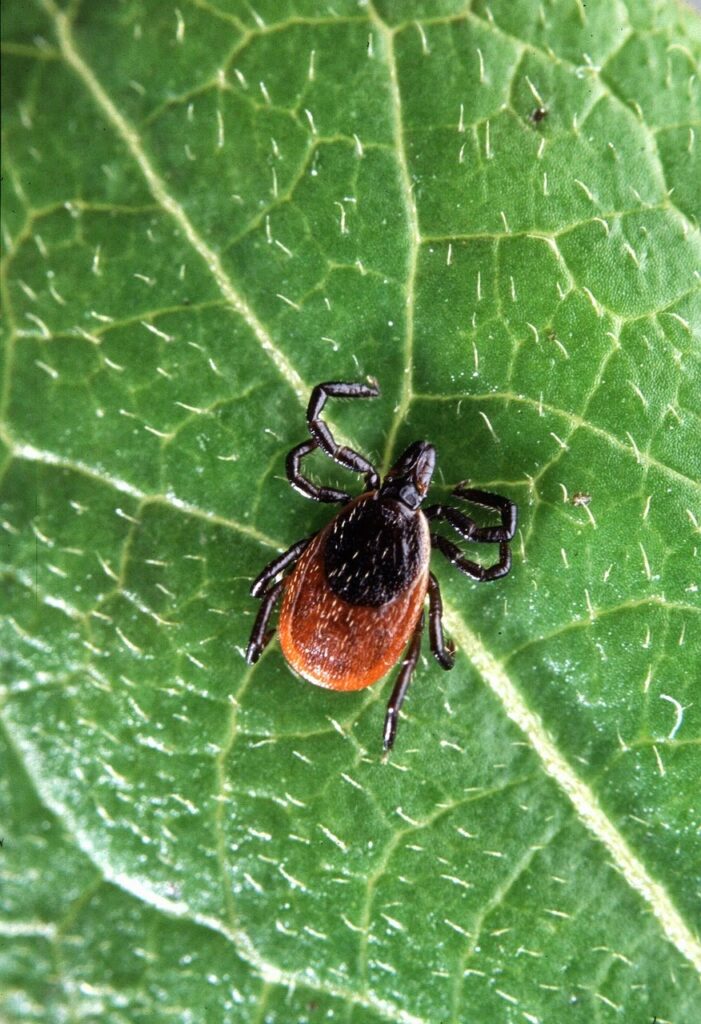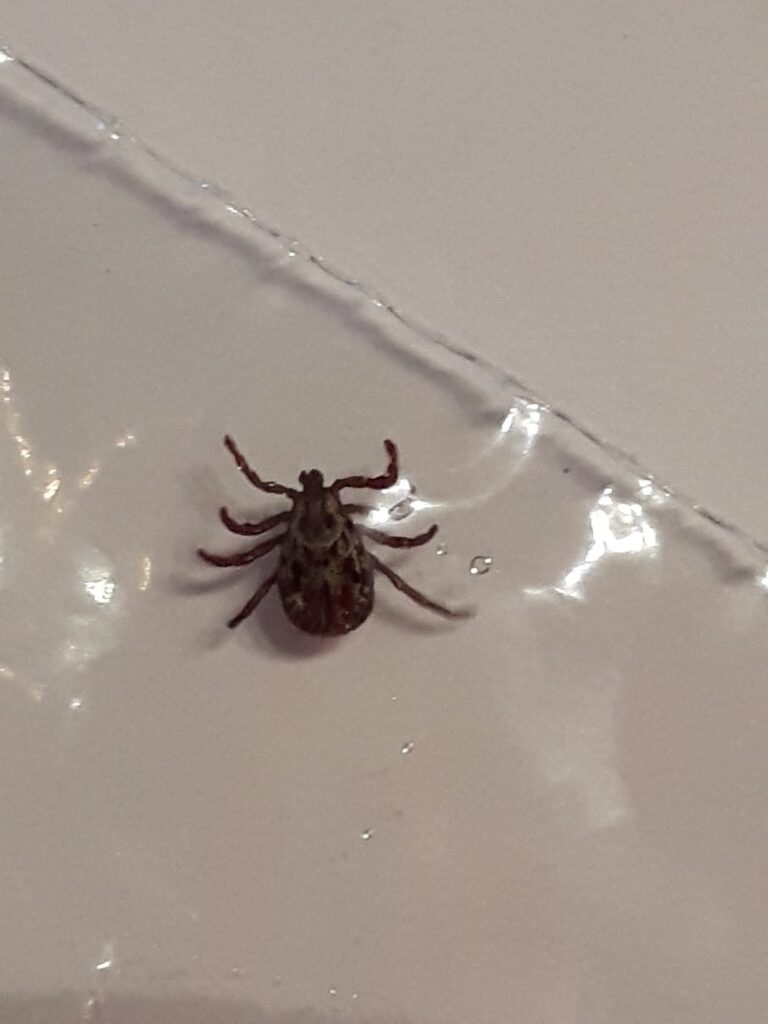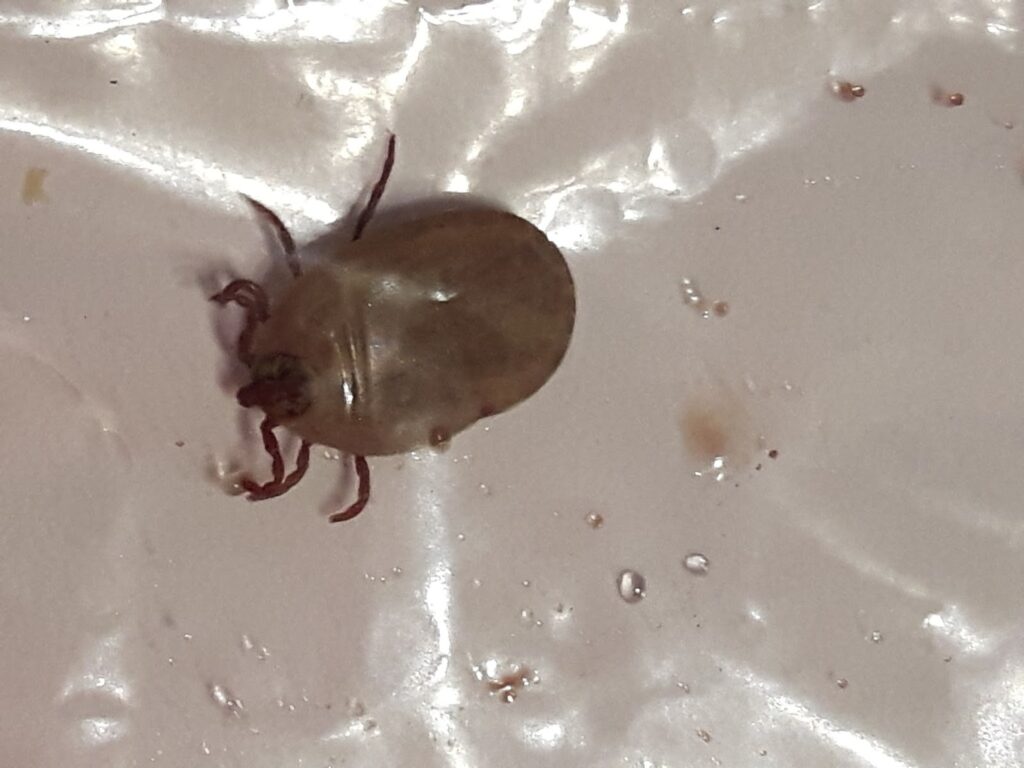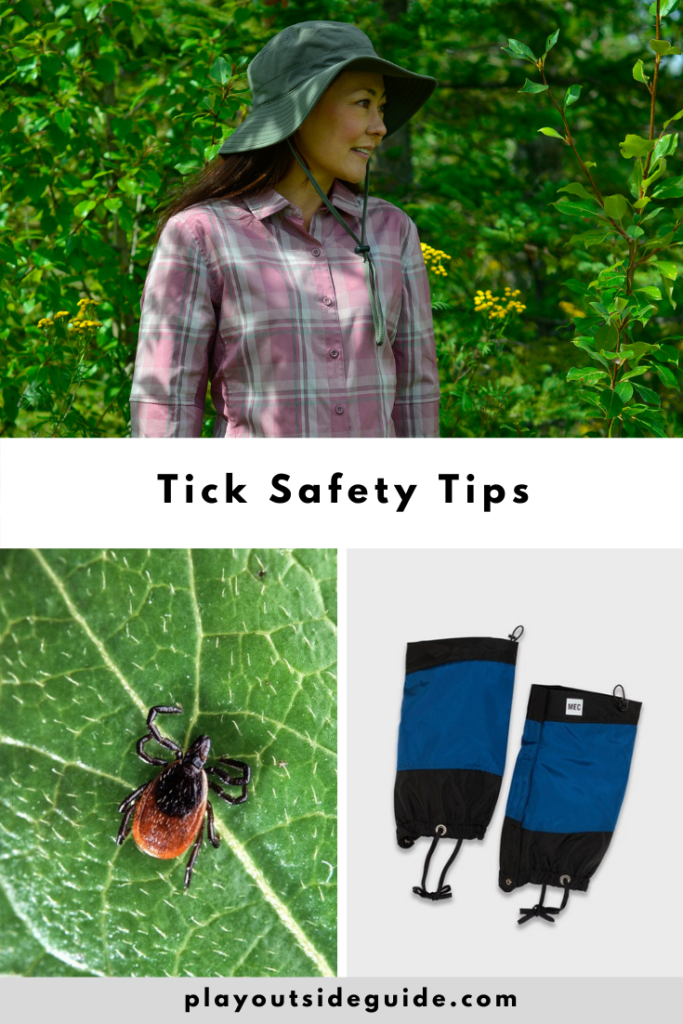Learn about ticks and where they hang out to avoid getting tick bites

Image Credit: Pixabay.com

It’s tick season, so we need to cover up, be aware of where ticks hang out, and do tick checks after every hike. While Lyme Disease is easy to treat if caught early, the Canadian blood test has a high rate of false negatives and many doctors in Alberta will not test for it as they do not believe Lyme Disease can be caught here. Please educate yourself so you reduce the risk of catching Lyme Disease and other tick-borne illnesses.
I became more concerned about ticks after a good friend of mine was diagnosed with Lyme Disease in 2011. After being severely ill for 4 years (her initial bloodwork here in Alberta came back negative) – to the point that she had to go on disability – she flew to the US for testing and was diagnosed with Lyme Disease. Had my friend received treatment shortly after contracting Lyme Disease, her recovery would have been quick (few rounds of antibiotics). Unfortunately, due to late diagnosis and treatment, her road to recovery was seven years. It was shocking to see my adventurous, outdoor-loving friend unable to hike, work, or even drive when symptoms were at their worst.
Covering up, using tick repellent, and staying out of long grass and bushes are three of the main ways you can protect yourself from tick bites. It’s also helpful to know where they live (near the ground, not in trees!) and when they’re active.
In the first part of this story, we dispel some myths about ticks. Part two has steps you can take to reduce the chance of being bitten by ticks. Stay safe out there!
Disclosure: This story contains affiliate links through which I may earn a small commission at no extra cost to you. Thank you for supporting our website!
Table of Contents
5 Myths About Ticks
Myth 1: Ticks carrying Lyme Disease do not live here.
Birds carry ticks, so it is easy for Lyme Disease (and other illnesses) to be carried from place to place. “Of the 139 [deer ticks] found in Alberta last year, one in five tested positive for the [Lyme disease causing] bacteria; and that number has health officials on alert.”1 People have contracted Lyme Disease in Alberta and Lyme carrying ticks have been found on pets in urban centres. Be tick aware in urban parks as well as mountain parks!
Myth 2: Ticks only spread disease in the spring.
Ticks are active pretty much any time the temperature is over 3 or 4 C, but they will crawl through snow for a blood meal if snow cover is thin and they sense you.
“Overwintered and new adult ticks are most common in the early spring and fall period, whereas the smaller nymphs are generally most active and peak in the summer months.”2 Ticks “go dormant as the temperature drops below 40° F [4.4 C].”3
Myth 3: Deer Ticks only bite deer and Dog Ticks only bite dogs.
Deer and dog ticks have been named after the animals they are most frequently found on, but they will feed off of anything they can from deer and dogs, to mice and people.
Myth 4: All ticks have 8 legs.
All adult ticks have 8 legs, but their larvae have only 6 legs.4 While disease transmission from larvae is extremely rare (they need to feed first and become infected), there have been cases where the eggs were infected by the mama tick via transovarial transmission (Source: Tick Research Lab of Pennsylvania – The Tick Life Cycle).
Since it is hard to ID tick larvae, your best protection from ticks at all stages of their life cycle is to cover up, avoid areas ticks hang out in, and use tick repellent on clothing, footwear, backpacks, and exposed skin.
See our story Effective Tick Repellents and How to Use Them for more info.
Myth 5: Ticks drop on you from trees.
“Ticks live in the soil and emerge to climb tall grass, shrubs, bushes and low level tree branches up to a height of 20cm-70 cm in search of a blood host. They attach when people or animals brush past.”5 They can, however, drop from birds (a common host), and “are ‘programmed’ to try and attach around your head and ears” (Source), so wearing a hat can also help keep hitchhikers off your scalp!
“People are getting ticks anywhere — their backyards and the river valley. There doesn’t seem to be any pattern we can pick out,” said Daniel Fitzgerald, a laboratory technologist with Alberta Agriculture and Rural Development.6
Tick Safety Tips
Full grown ticks are only 1-5 mm in length7, and the larvae (as big as a grain of sand) and nymphs (poppy seed sized) are even smaller, so a tick check may not detect all critters. The good news is that ticks generally take several hours to get settled in a feeding spot – usually somewhere warm and protected like your groin or armpits – and usually do not transmit disease until they have been attached for at least 24 hours8, so you have plenty of time to detect and remove any ticks. Here are some ways to prevent tick borne diseases:
- Use bug spray that contains 20-30% DEET or 20% icaridin and pretreat clothes and footwear with 0.5% permethrin if possible (Source: www.cdc.gov/ticks/prevention). I got the opportunity to try WindRiver Tick Repellent clothing last year and liked that it was lined had no smell! For more information on which tick repellents to use and how to use them, please see this post: Effective Tick Repellents and How to Use Them.
- Cover up! Wear long sleeved shirts and pants. Gaiters should be worn in tall grass or bushes to prevent ticks from getting in at your ankles. If you don’t have gaiters, tucking your pants into your socks.
- Wear a hat. If you have long hair, keep it up in a ponytail.
- Wear light colored clothes so it is easier to see ticks. If you see any, brush them off immediately! *Check your backpack for hitchhikers too!*
- Stay out of tall grass and brush as much as possible.
- Avoid sitting on the ground on the side of the trail. Sit on a bench or rocks at hiking breaks instead. (This said, ticks can be found on rocks, too. Mountain sheep, birds and other animals carry them, so where there are animals, there can be ticks).
- Remove ticks immediately & remove them correctly. The risk of disease transmission is “0% – 1% if it is attached for less than 72 hours.”9 Visit www.cdc.gov/ticks/removing_a_tick.html for tick removal instructions. In order to remove ticks in a timely manner, you should carry a tick remover tool and/or tweezers in your first aid kit.
- Shower and scrub with a washcloth after hiking to remove larvae, nymphs, or adult ticks that are still looking for a feeding site.
- Comb your hair and check your children’s hair for ticks. Ticks like to bury into your scalp where it’s warm and there’s less chance of detection. A lice comb is helpful for dark / thick hair.
- After hiking, toss hiking clothes in the dryer on high heat for 20 minutes (10 minutes if you have a gas dryer). The heat of the dryer will kill any ticks. Dry then wash clothes!10


What do I do if I find a tick on me or my pet?

Not all ticks carry diseases, and not all deer ticks carry Lyme, so there is no need to panic if you find a tick attached to you. Be sure to remove it properly and promptly though. The CDC has instructions on removing a tick here: www.cdc.gov/ticks/after-a-tick-bite.
If you find a tick on you or near you in Alberta, put it in ziploc bag, jar, or plastic container with tight-fitting lid for identification:
- Take photos of the tick.
- Submit tick photos for identification/research purposes on the eTick app or at eTick.ca.
- If asked to, send the tick to Submit-a-Tick for testing. Results take about 2-3 weeks.
- If you were bitten by a deer tick (aka black-legged tick), you can take antibiotics as a preventive measure against Lyme Disease. Many doctors will offer this, but some won’t, so KEEP THE TICK and show it to the doctor along with the eTick identification record.
- Whether test results are back or not, if you get a rash, fever, aches and pains, or feel really sick within a month of being bitten, go to your doctor or the hospital and tell them you were bitten by a tick. They will need to know when you were bitten, where the tick came from (e.g. were you in your yard or in Banff) and what other symptoms you have. There are other tickborne illnesses besides Lyme, but they are extremely rare (0-3 cases a year according to Alberta Health).
Ticks found on pets may be submitted to your veterinarian.
Conclusion
Since tick nymphs and larvae are very tiny and hard to spot, and ticks at any stage in their life cycle are active from spring through fall (but sometimes emerge in winter when the temperature rises above 3-4 degrees Celsius), it is best to avoid hiking through bushes and long grass, cover up, and use insect repellents that are effective against ticks on every hike.
References
- globalnews.ca/news/1348443/ticks-and-lyme-disease-what-you-need-you-know/
- www.health.gov.sk.ca/lyme-disease
- www.health.ny.gov/publications/2825/
- canlyme.com/lyme-prevention/
- tickalert.org/faqs
- globalnews.ca/news/1348443/ticks-and-lyme-disease-what-you-need-you-know/
- canlyme.com/lyme-prevention/tick-id-removal/
- https://www.canada.ca/en/public-health/services/diseases/lyme-disease/removing-submitting-ticks-testing.html
- Shapiro, E. D. (2014). Borrelia burgdorferi (Lyme disease), Pediatrics in Review, 35(12), 500-509
- www.tickencounter.org/ticksmart/tips






6 comments
Thanks Charlie!
good
Thanks Emily! A thorough tick check (and tick removal if necessary) is the best thing you can do to stay safe, but we also spray our footwear with insect repellent as a precaution.
You're right, Marko! Wildlife carry ticks around, so they could be anywhere. Why ticks checks are our best defense!
I just found out about this and regret not knowing sooner! Sounds amazing keep up the good work!
Re #6: have found ticks on summits, among rocks and no grass. I think anywhere there are lots of sheep there are lots of ticks.
Comments are closed.